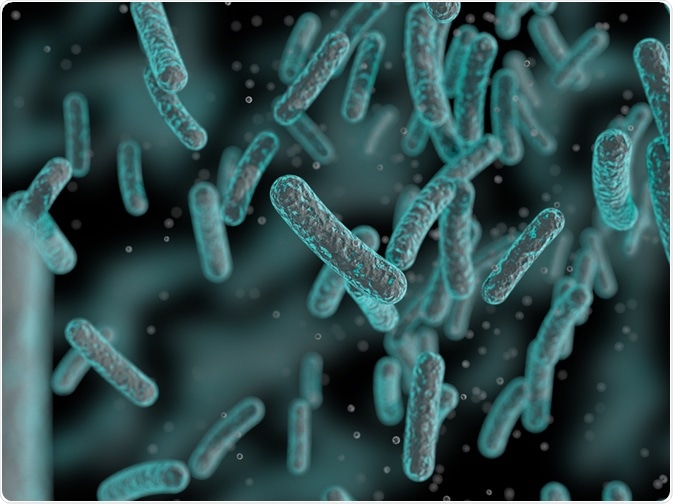A recent study unveiled how unique organ-specific microbial signatures are indicative of type 2 diabetes.
 Image Credits: OlgaReukova / Shutterstock.com
Image Credits: OlgaReukova / Shutterstock.com
Previous studies have linked the composition and activity of the microbiota in the gut to several metabolic diseases. Although the correlation between the two has been well-documented, the causal link between the gut microbiota and obesity and type 2 diabetes is yet to be established.
Limitations in determining the causal link are historically related to limitations of the study in question; typically, studies rely on the analysis of stool microbiota. Even fewer studies have investigated microbial signatures in blood, muscle, or adipose tissue of obese and diabetic individuals relative to obese and normoglycemic participants.
By far the most concerning limitation is concern surrounding the contamination of samples by external microbes and false positives.
In this study, published in Nature Metabolism, the group demonstrated the application of bacterial 16S ribosomal RNA (rRNA) gene-quantification to discern bacterial signatures at various sites across the body. An additional pioneering aspect of their work was the investigation of inter-organ microbial signature analysis.
Workflow for bacterial sampling across five sites
The authors provided a comparative analysis of microbial signatures found in key areas; 3 adipose tissues, the plasma, and the liver in morbidly obese individuals. They sought to determine how these microbial signatures compare between nondiabetic individuals and those with type 2 diabetes.
The group took biopsy samples from the 3 adipose subtypes: mesenteric adipose tissue (MAT), omental adipose tissue (OAT), and subcutaneous adipose tissue (SAT), along with samples from their liver and plasma. Samples were collected from morbidly obese individuals with either type 2 diabetes or normoglycemia.
To address the issue of contamination, there were extensive sets of controls at each tissue and a sequencing manipulation step. Additionally, rigorous statistical analysis was performed to minimize false positives.
A comprehensive set of negative controls was used to account for environmental sample contamination at the stages of tissue collection and manipulation, DNA extraction and amplification.
Contamination stemming from the manipulation of tissue was similarly controlled for during blood centrifugation, plasma collection, and tissue aliquoting. Water samples were also used to control for labware, and errors from associated method-based steps.
Bacterial compartmentalization in diabetic and obese individuals
Samples were processed for RNA-based bacterial quantification and taxonomic profiling. Higher 16S rRNA gene counts were found in the liver and OAT biopsies relative to SAT, MAT, and plasma.
A greater relative abundance of gut microbial signatures were found in MAT samples, which is consistent with the movement of bacteria along the gut-liver axis; the mesentery is the site proceeding the intestinal barrier, which contains abundant numbers of gut-residing immune cells.
Proteobacteria, specifically those of the genus Pseudomonas was the most abundant bacteria present in all five sampling sites. In the adipose tissues, the genera found with the greatest abundance (Bacteroides, Faecalibacterium and Enterobacter) are representative of the gut microbiota; the other genera were consistent with those originating from soil and water.
Owing to their case-by-case analysis, results proved that accurate, and relativity-based methods of quantification of specific taxa are compromised by contamination; to illustrate this, tissues contain ~1,000 times greater copies of bacterial 16S rRNA relative to negative controls.
The profiles seen in tissue, as well as the state of the individual (normoglycemic or with T2D), are not random as shown by statistical analysis. Therefore, contamination was demonstrated to universally affect the microbial signatures seen. Indeed, bacterial deposition in the plasma of those with T2D was found to be lower relative to negative controls.
Real bacterial translocation or active NM cell-mediated sampling of the intestinal contents?
Anhê et al.’s results concur with previous studies that demonstrate that blood and tissue in healthy and disease individuals present differences in bacterial colonization. Through their rigorous controls, and attempts to mitigate contamination, the team demonstrated that environmental bacteria (present in food and water) can cross the gut barrier and arrive at organs.
Moreover, diabetic patients are additionally exposed to bacterial contamination owing to their relatively greater incidences of hospitalization. Here, they have a greater risk of infection which leads to greater tissue microbiota.
High levels of glucose also decrease the gut barrier function, which results in a greater potential for the translocation of ingested bacteria. Similarly, environmental bacteria can circumvent immune cells in the gut relative to inherent (commensal) bacteria.
Immune cells in the gut may also permit bacteria to cause immune response necessary for the maturation of the immune system, which later affects the deposition of bacteria in the MAT.
Although a disrupted gut barrier function was shown, the group was unable to concretely determine whether the presence of bacteria at organs and tissues is a product of translocation or a result of M cell (an immune cell subtype) sampling.
Limitations: contamination risk when sampling
The group's findings supported the hypothesis that specific niches are reached by environmental bacteria across several organs, and these work to alter an individual’s response to a glucose load.
From their results, the team could not fully eliminate environmental contamination of microbiota, particularly in samples taken from plasma. As such, Anhê et al. noted that future studies are required to validate the biological relevance of their results.
Moreover, the 16S rRNA sequences mined could not be concretely attributed, to live, biologically relevant microbiota, although the team mentioned a study by Schierwagen et al. in which they were able to cultivate two distinct genera of environmental bacteria using blood samples which concurred with the 16S rRNA.
Source
Anhê et al. (2020) Type 2 diabetes influences bacterial tissue compartmentalization in human obesity. Nature Metabolism. DOI: 10.1038/s42255-020-0178-9
Further Reading